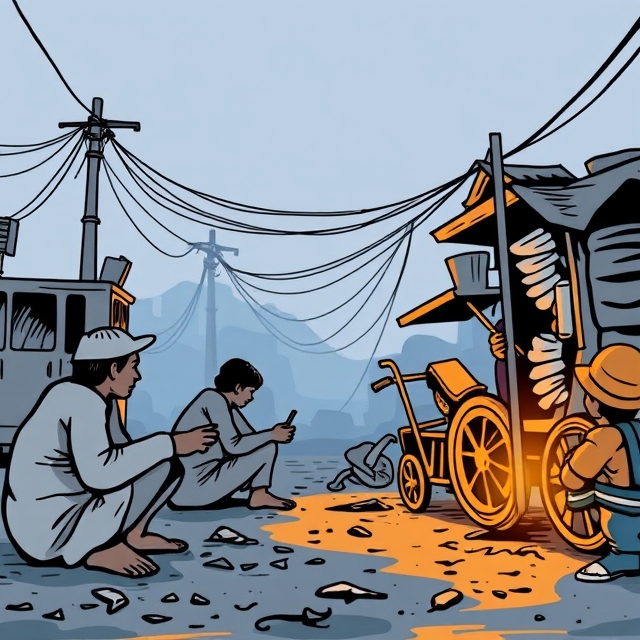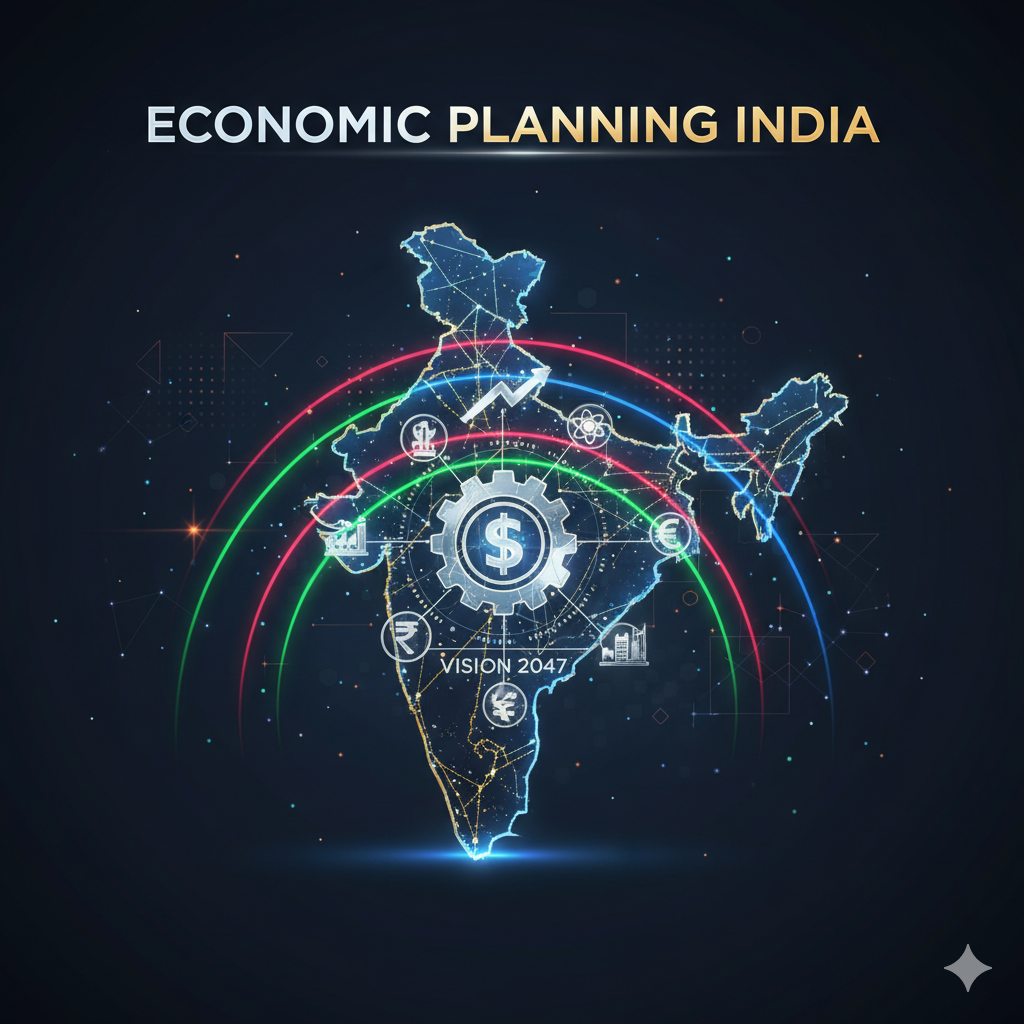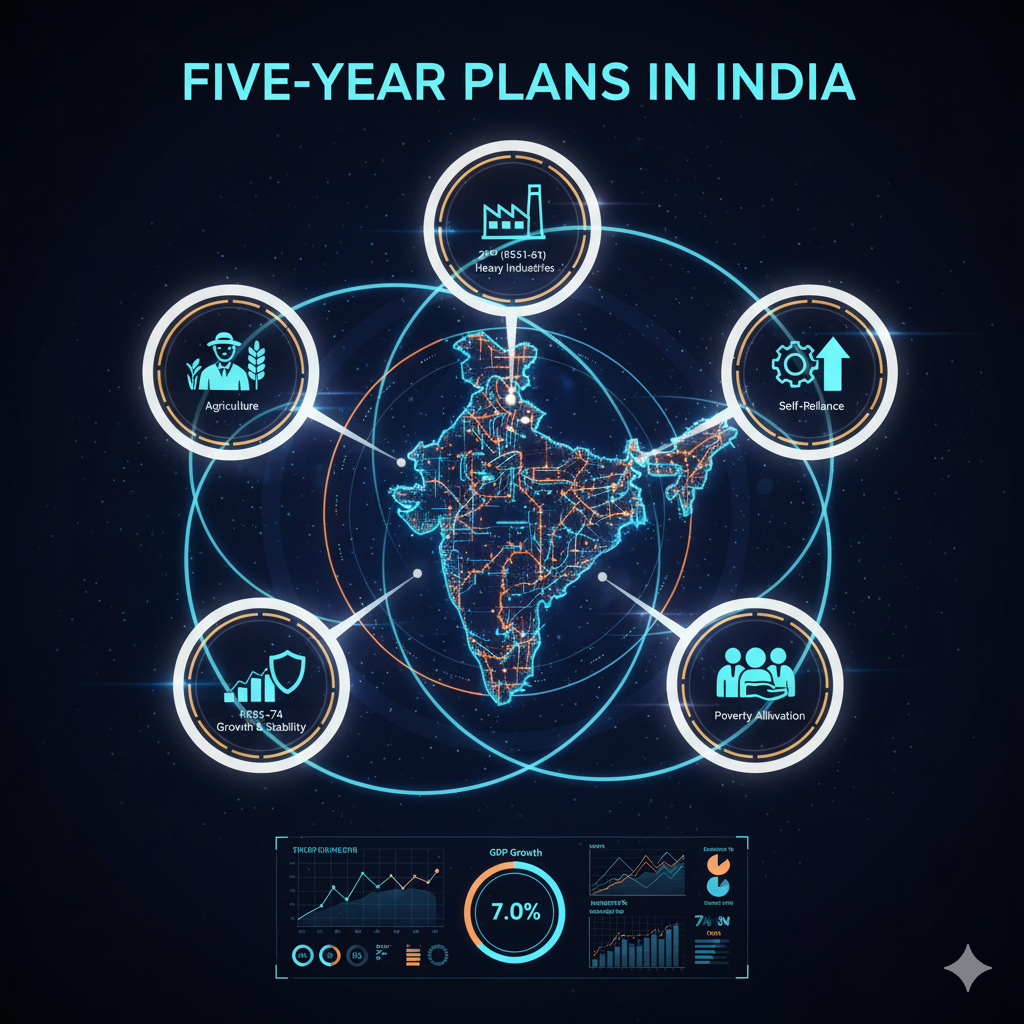India, with its rapidly growing economy, large population, and significant socio-economic diversity, faces the persistent challenge of poverty. Despite several economic reforms and growth in GDP, poverty continues to affect a substantial portion of the Indian population. It is often suggested that unemployment is the primary cause of poverty in India. While unemployment does play a crucial role in the poverty cycle, it is essential to analyze poverty through a broader lens. This essay examines the relationship between unemployment and poverty, explores other contributing factors, and provides a comprehensive understanding of why poverty remains a critical issue in India.
Understanding Poverty in India
Poverty is not merely the lack of income; it also refers to the absence of basic services such as healthcare, education, clean drinking water, sanitation, and adequate nutrition. According to the World Bank, poverty in India is defined by people living on less than $1.90 a day. The multidimensional nature of poverty in India means that individuals and families can be poor in different ways, including educational deprivation, lack of economic opportunities, and vulnerability to economic shocks.
India has made significant strides in reducing poverty since independence, yet it remains home to the largest number of poor people in the world. The poverty rate, as per estimates, has decreased over the years, but millions still live below the poverty line, particularly in rural areas.
The Role of Unemployment in Poverty
Unemployment, the condition where individuals who are capable and willing to work cannot find a job, is a direct cause of poverty. It is evident that people without employment struggle to meet basic needs, and this inability to generate income leads to impoverished living conditions. Unemployment in India is a complex issue with multiple causes, and it disproportionately affects certain demographic groups, such as the youth, women, and unskilled laborers.
- Rural vs. Urban Unemployment In India, unemployment is more prevalent in rural areas, where agricultural work is seasonal and often insufficient to sustain a household throughout the year. The lack of industrialization in rural India leads to limited job opportunities outside of agriculture. In urban areas, although employment opportunities are higher, many face underemployment, where people work in low-paying, informal jobs without benefits or job security.
- Youth Unemployment India has a large youth population, and the rate of unemployment among young people is significantly high. The demand for jobs exceeds the available opportunities, particularly for individuals with low skill levels or education. The mismatch between the education system and industry requirements further aggravates this issue, as many young people are not adequately prepared for the labor market.
- Structural Unemployment India faces structural unemployment due to shifts in the economy. The transition from an agrarian economy to a service and industrial-based economy has left many unskilled and semi-skilled workers without jobs. Moreover, the rise of automation and technological advancements has reduced the demand for traditional manual labor, leading to a situation where many workers lack the skills required for new industries.
- Underemployment Underemployment refers to situations where people are working in jobs that do not fully utilize their skills or provide adequate wages. This type of employment does not lift people out of poverty because they are not earning enough to meet their basic needs. Many workers in the informal sector, especially in agriculture and service industries, experience underemployment.
Other Factors Contributing to Poverty in India
While unemployment plays a critical role in poverty, it is not the only cause. Several other factors contribute to the prevalent poverty in India, and these need to be understood in a holistic manner.
- Inequality in Income and Wealth Distribution One of the fundamental causes of poverty is the unequal distribution of income and wealth in India. The gap between the rich and poor continues to widen, and this economic disparity perpetuates poverty. In urban areas, economic growth has led to the rise of a wealthy middle class, while rural areas, where poverty is more entrenched, have not benefited equally from growth.The unequal access to resources, including education, healthcare, and credit, exacerbates the wealth divide. The marginalized sections of society, such as lower-caste communities and tribals, often face systemic discrimination that limits their economic mobility.
- Education and Skill Development Education is a key factor in breaking the cycle of poverty, but access to quality education remains limited for a large segment of the population, particularly in rural areas. Lack of education and skills prevents individuals from obtaining well-paying jobs and contributes to poverty.Even among those who complete formal education, the quality of education and the relevance of the skills taught are often out of sync with the needs of the job market. This disconnect leads to high levels of youth unemployment and underemployment, which directly affects poverty levels.
- Poor Healthcare and Nutrition Poor health and malnutrition are significant barriers to escaping poverty in India. High levels of infant mortality, lack of access to healthcare services, and the prevalence of diseases such as tuberculosis and malaria prevent people from working, reducing their earning potential. Chronic illnesses and inadequate nutrition can also contribute to reduced productivity and the inability to access employment opportunities, trapping individuals and families in poverty.The poor quality of public healthcare services, particularly in rural areas, forces many families to spend a disproportionate part of their income on medical expenses, further deepening their financial distress.
- Inadequate Infrastructure A lack of infrastructure, such as roads, transportation, electricity, and sanitation facilities, affects the ability of individuals to access jobs and participate in economic activities. Poor infrastructure particularly impacts rural and remote areas, where people are often isolated from urban centers of employment and economic opportunities.The absence of good roads and reliable transport systems makes it difficult for workers to commute, while inadequate electricity and water supply hinder the establishment of businesses and industries, limiting job creation.
- Caste and Social Discrimination India’s social structure, characterized by the caste system, continues to have an adverse impact on poverty. Historically marginalized groups, such as Dalits and Adivasis (tribal communities), often face discrimination in education, employment, and economic opportunities. This systemic exclusion prevents them from breaking free from the poverty trap.Social discrimination also affects women, who face lower wages and limited access to job opportunities compared to men. Gender bias in employment and the prevailing patriarchal structure hinder women’s economic independence, making them more vulnerable to poverty.
- Economic Policies and Governance Issues Although India has witnessed significant economic reforms in the past few decades, many of these reforms have not adequately addressed the needs of the poor. Economic liberalization and market-oriented policies have led to increased growth, but the benefits have not been evenly distributed.Governance issues, such as corruption, inefficient public services, and ineffective implementation of policies, have also hindered poverty alleviation efforts. Funds allocated for poverty reduction programs often do not reach the intended beneficiaries due to bureaucratic inefficiencies or corruption, limiting the impact of these programs.
The Interconnection Between Unemployment and Other Causes of Poverty
It is important to understand that unemployment does not exist in isolation but interacts with other factors that contribute to poverty. For example, inadequate education leads to a lack of skills, which in turn contributes to unemployment. Similarly, poor healthcare can result in chronic illness, which limits the ability to work, leading to economic hardship.
Unemployment often becomes a vicious cycle, where poverty results in limited access to education, healthcare, and other opportunities, further perpetuating the unemployment problem. At the same time, unemployment prevents individuals from accumulating wealth or improving their living standards, thus keeping them trapped in poverty.
Solutions to Poverty in India
Addressing poverty in India requires a multi-pronged approach that goes beyond merely tackling unemployment. Some of the key measures include:
- Job Creation and Skill Development The government must focus on creating jobs through investment in infrastructure, manufacturing, and service sectors. Moreover, skill development programs must be aligned with the needs of the labor market to enhance employability, particularly for youth.
- Education and Healthcare Reforms Improving the quality and accessibility of education, particularly in rural areas, is crucial. Additionally, improving healthcare services and providing social security measures for the poor will help individuals break free from poverty.
- Inclusive Growth and Reducing Inequality Economic policies should aim at reducing income inequality through progressive taxation, targeted welfare programs, and equitable distribution of resources. Addressing social discrimination and ensuring equal opportunities for marginalized communities will also be essential in alleviating poverty.
- Improved Governance Strengthening institutions, curbing corruption, and ensuring better implementation of poverty alleviation programs will help in making development more inclusive and effective.
Conclusion
While unemployment is undeniably a significant cause of poverty in India, it is only one piece of the larger puzzle. Poverty in India is the result of a complex interplay of factors, including inequality, lack of education, inadequate healthcare, poor infrastructure, and social discrimination. To effectively address poverty, it is necessary to adopt a holistic approach that focuses on inclusive growth, job creation, education, and social welfare. Only by tackling all the root causes of poverty can India hope to achieve sustainable and equitable development for its entire population.





It’s going to be finish of mine day, except before end I am reading this enormous piece of writing to increase my know-how.
This web site really has all thee info I wanted about this subject and didn’t know who to ask.